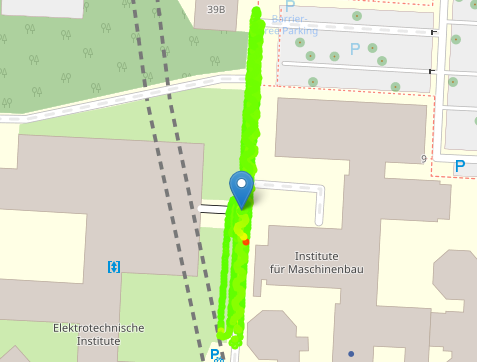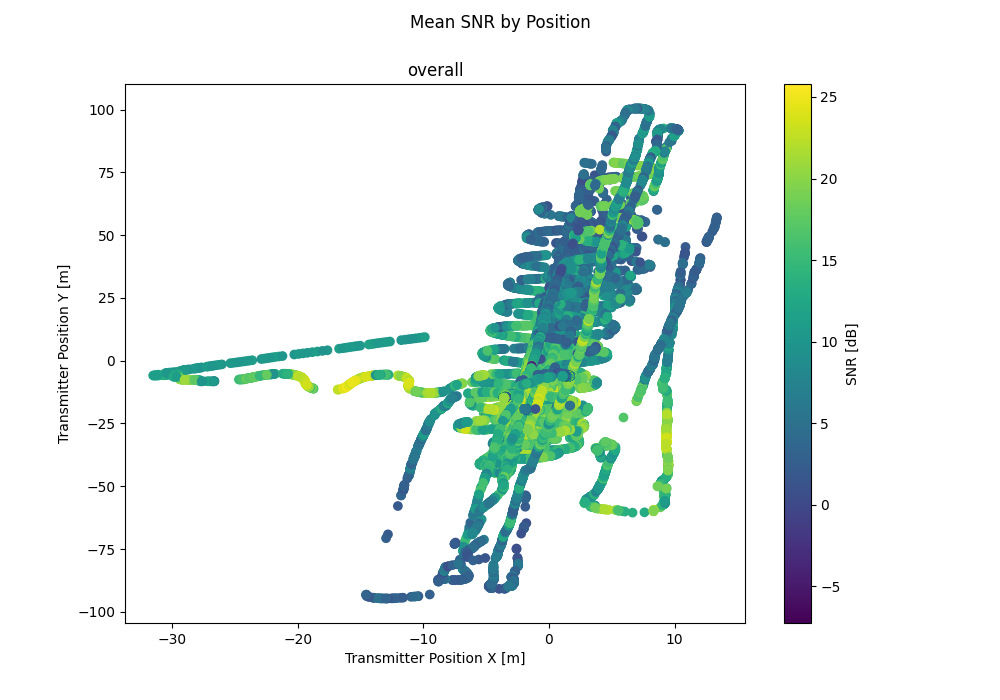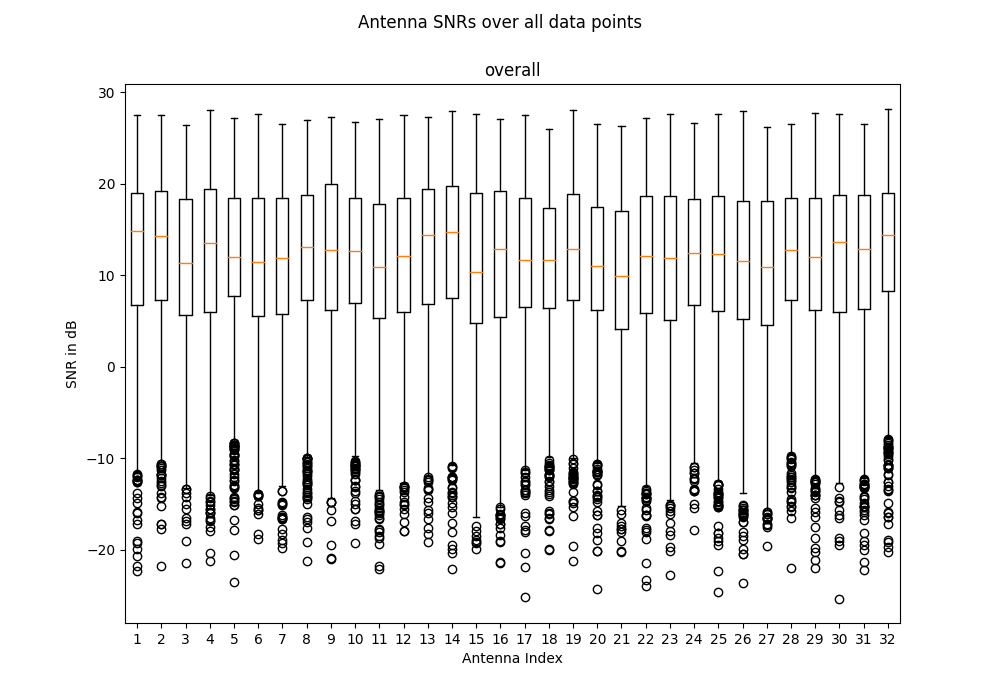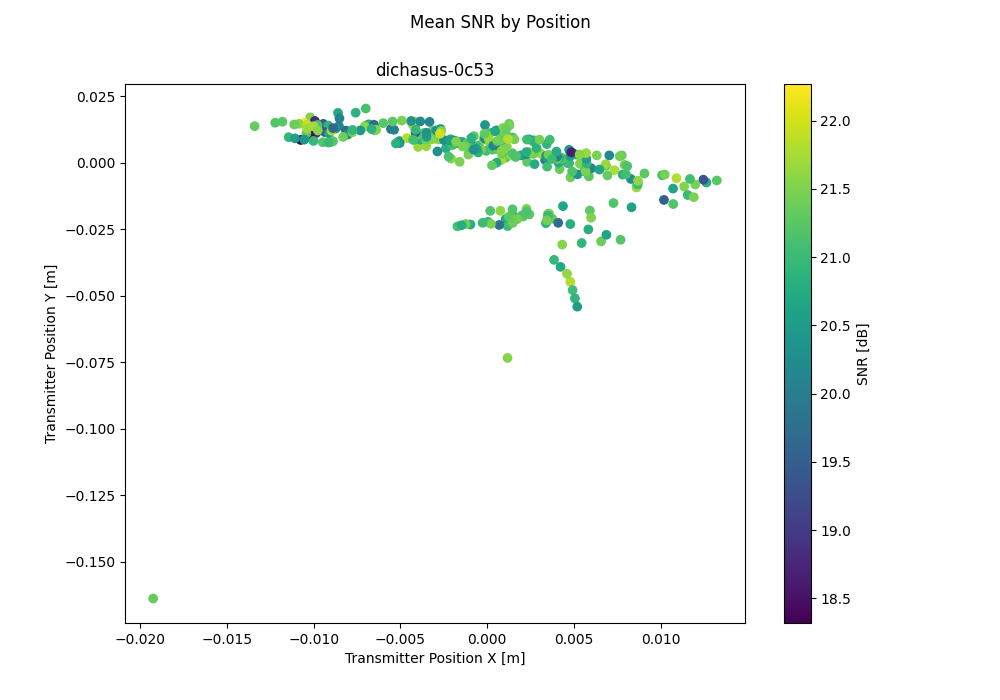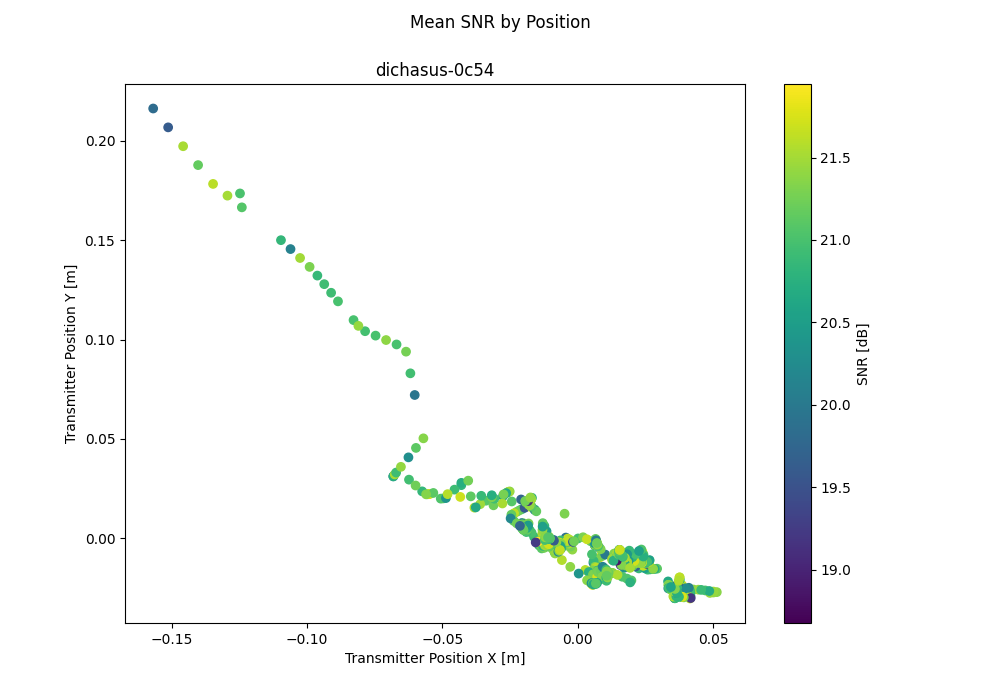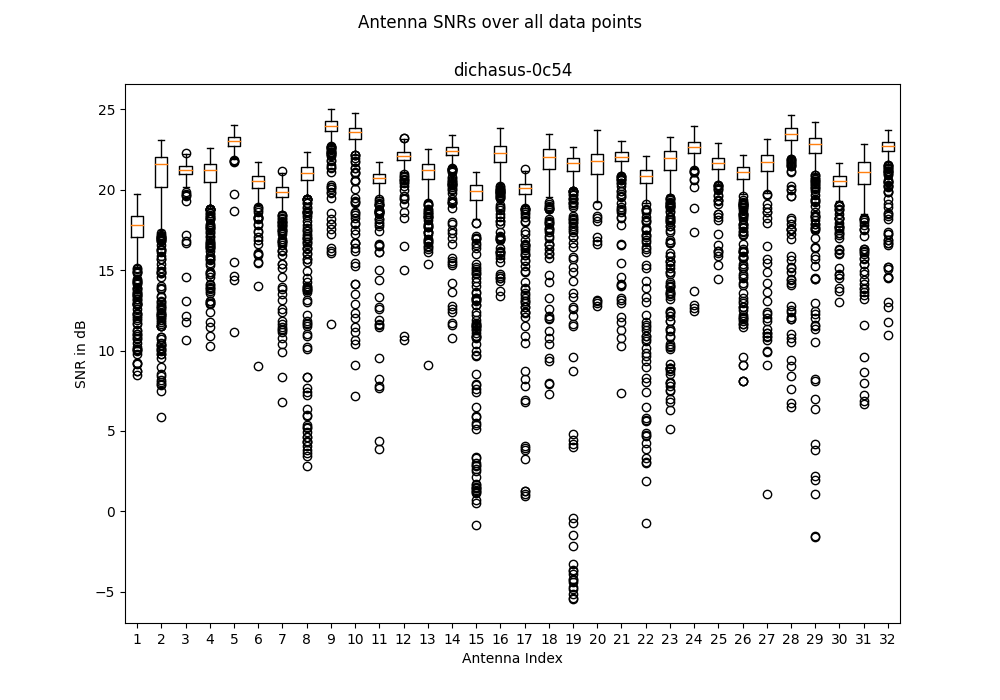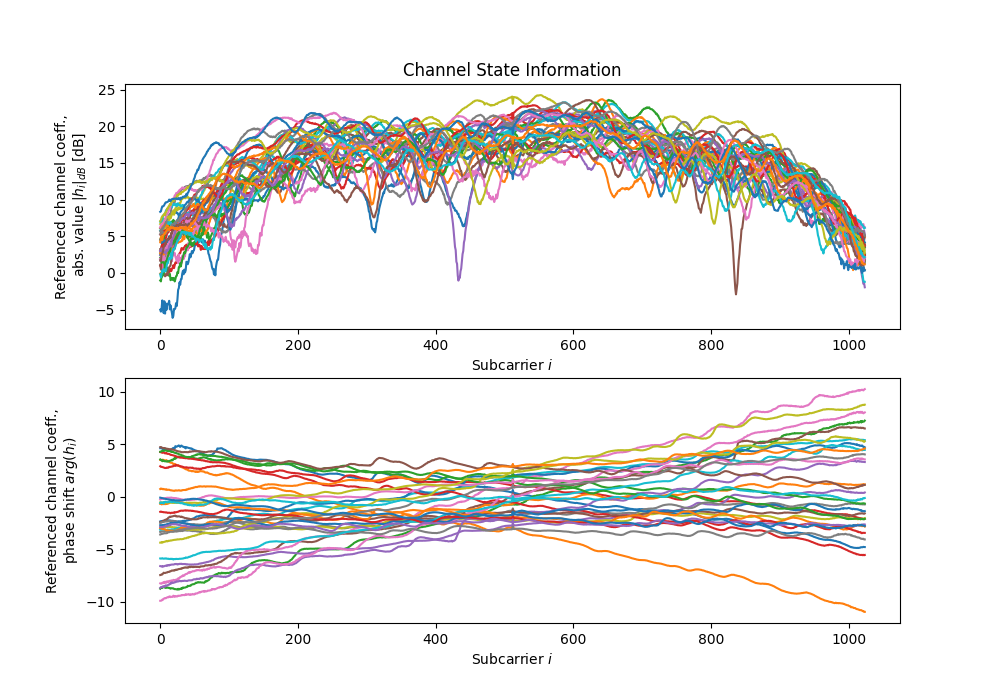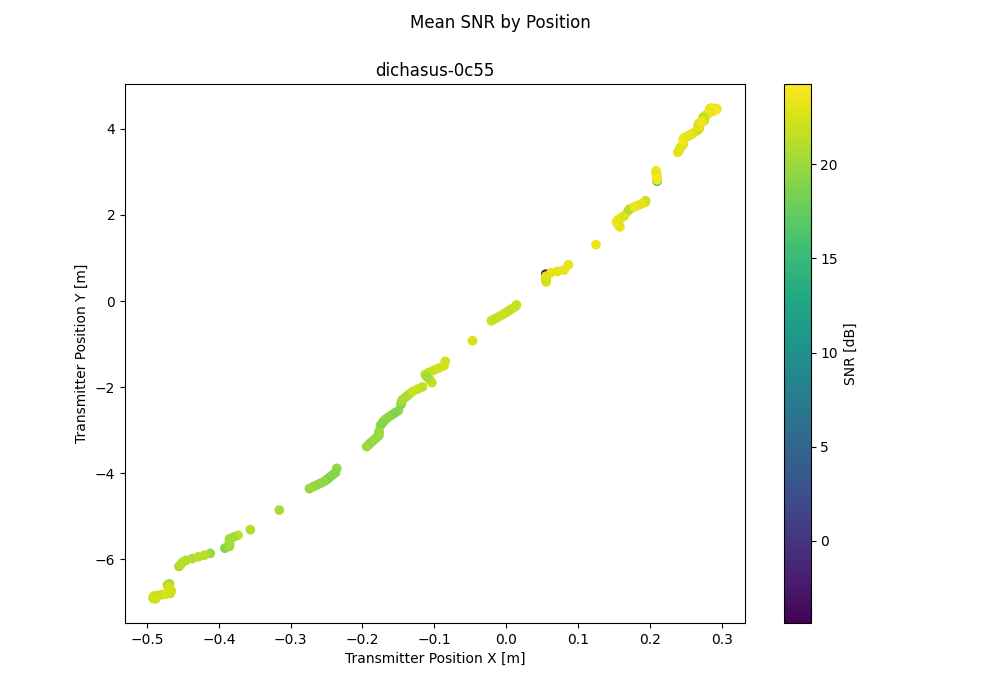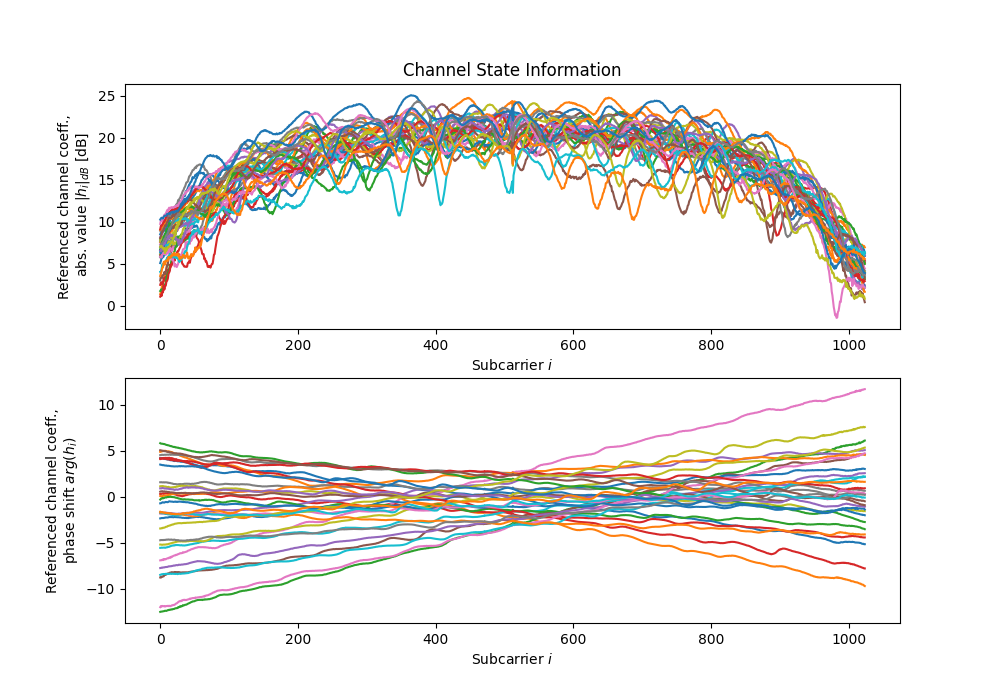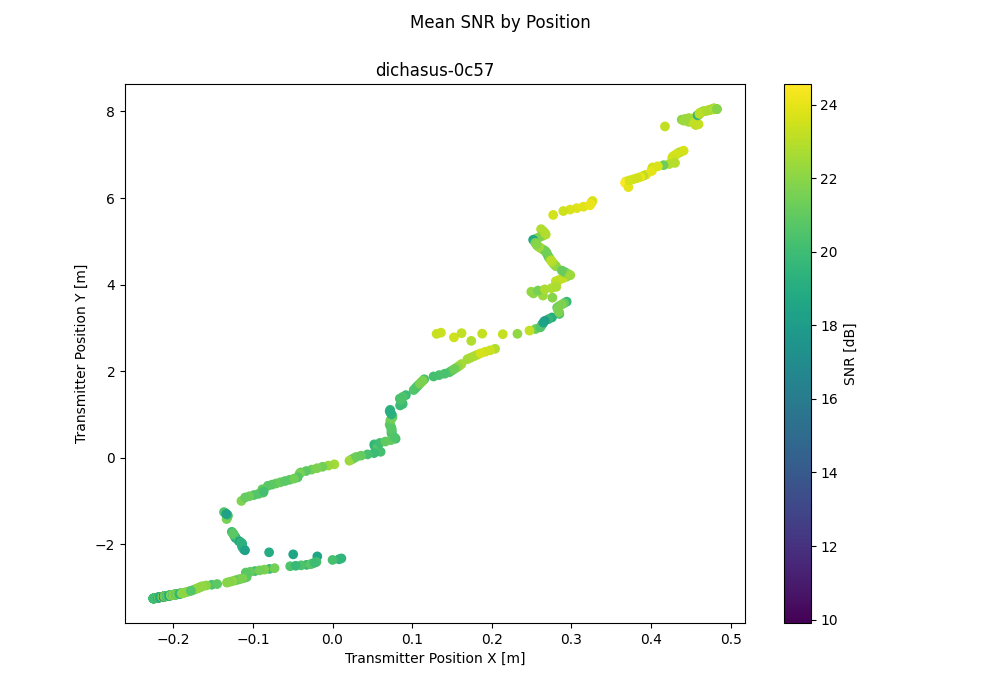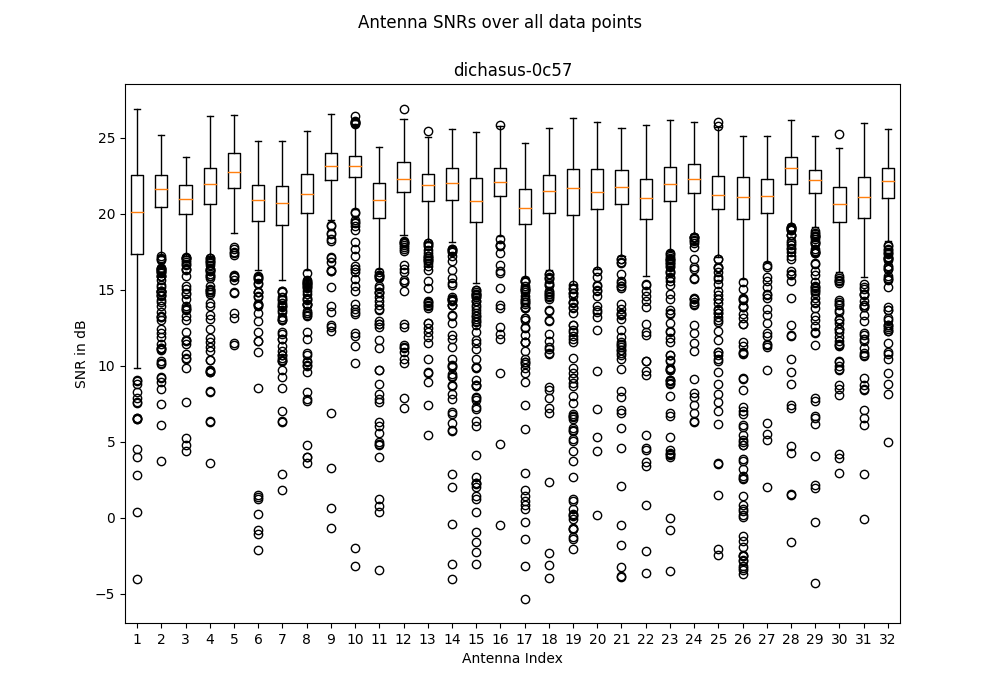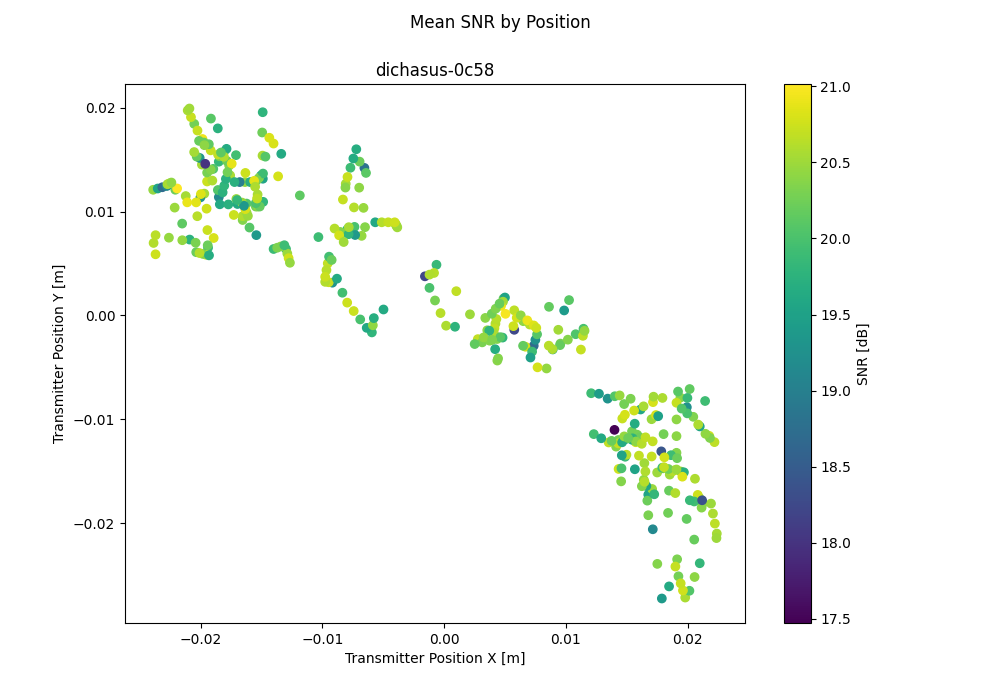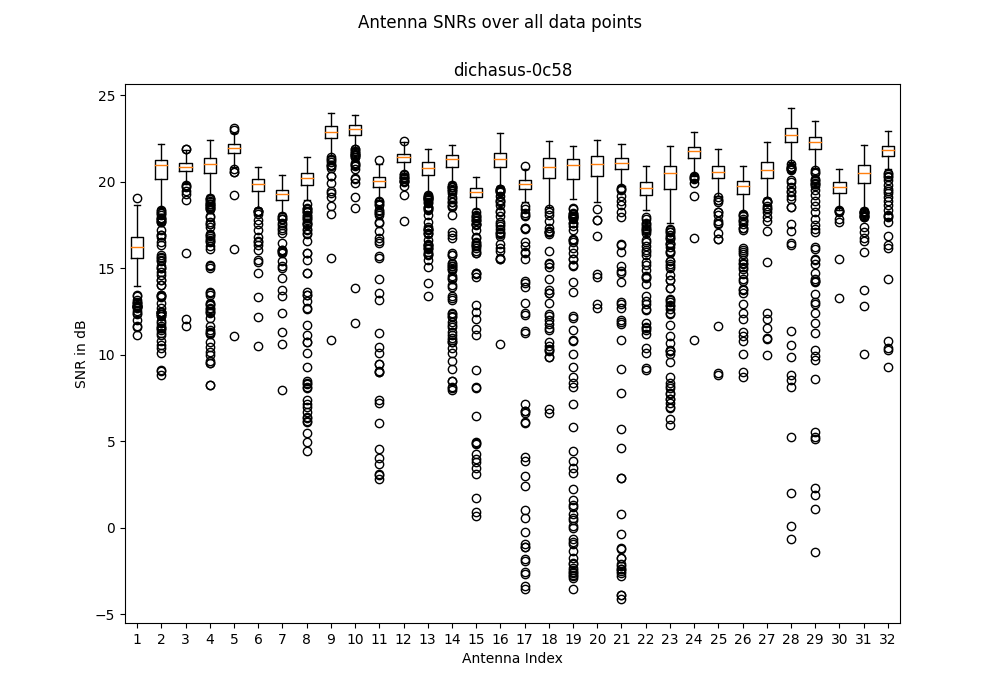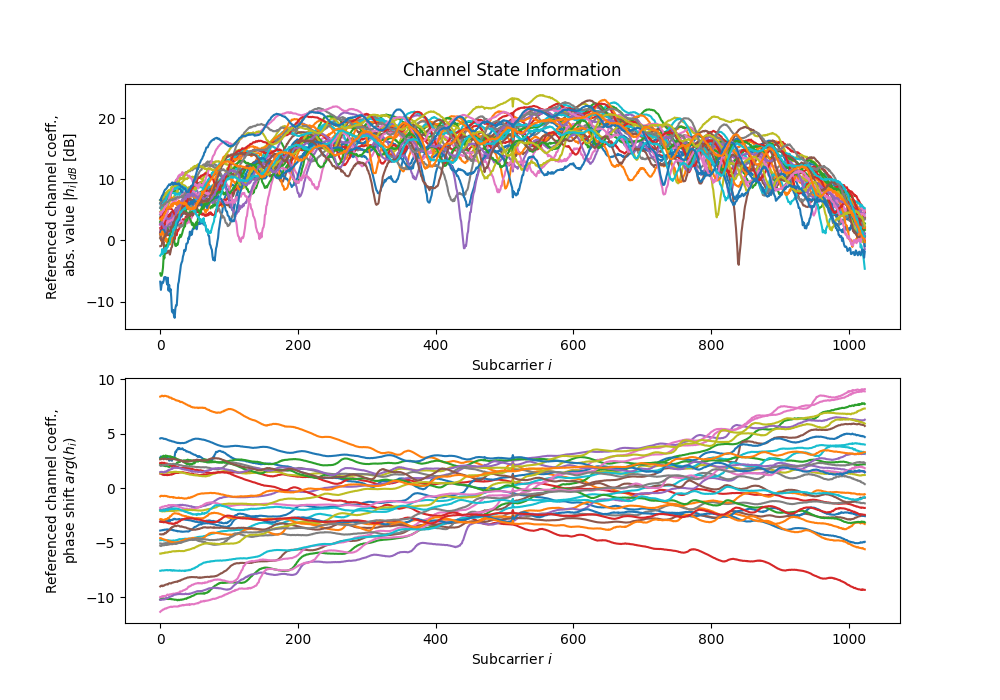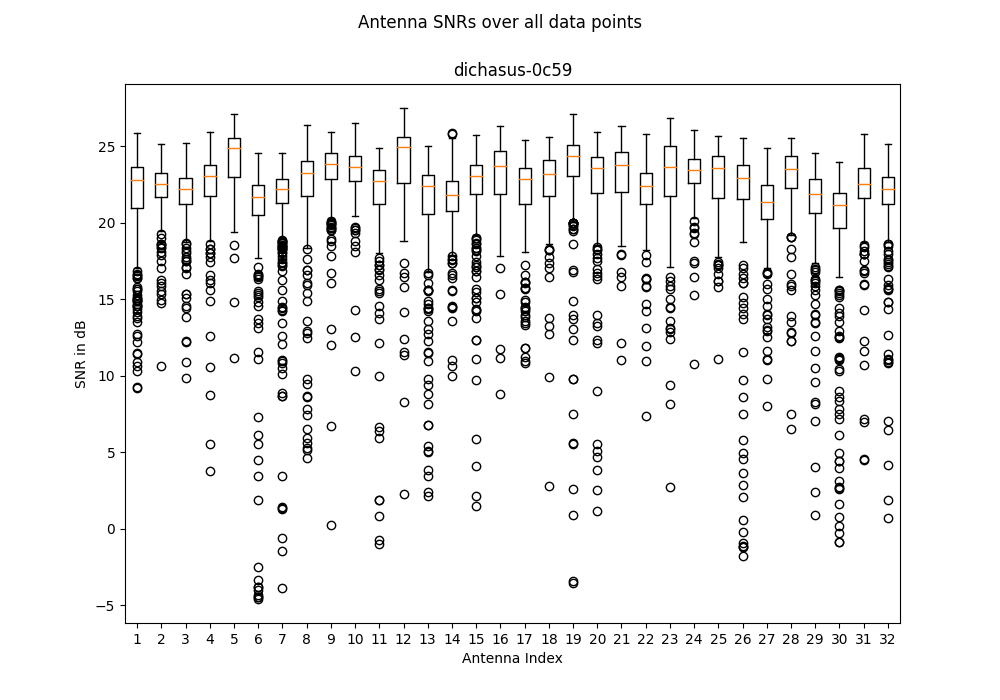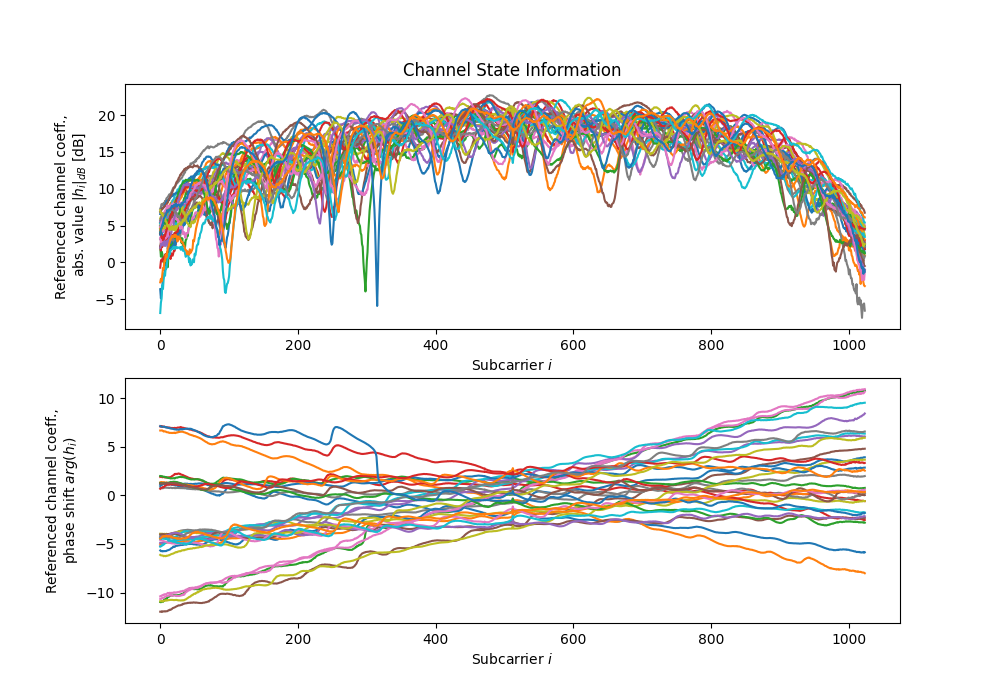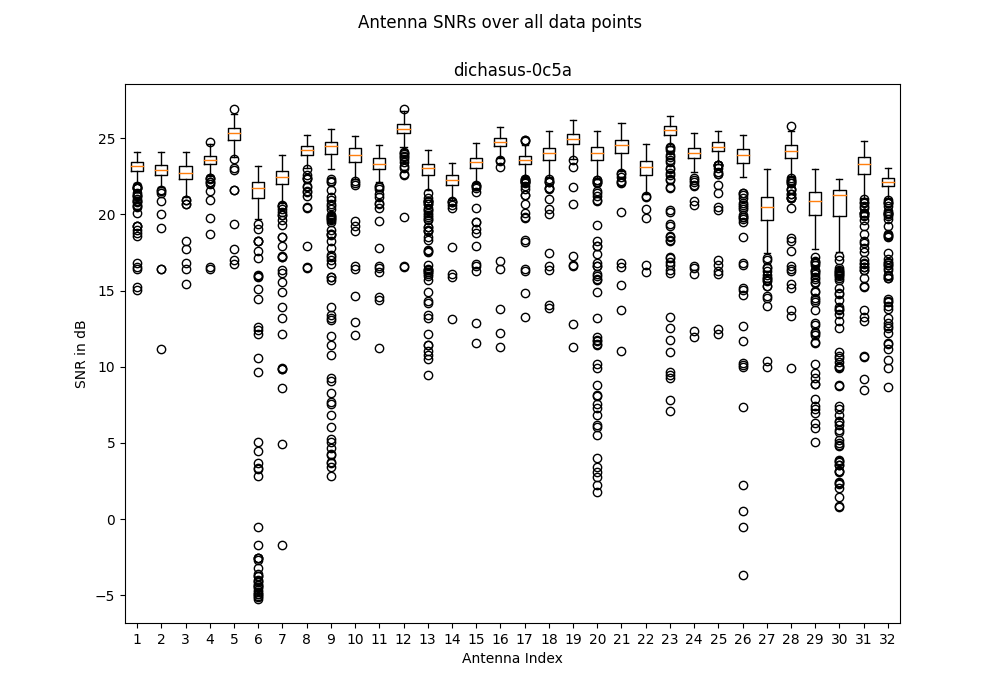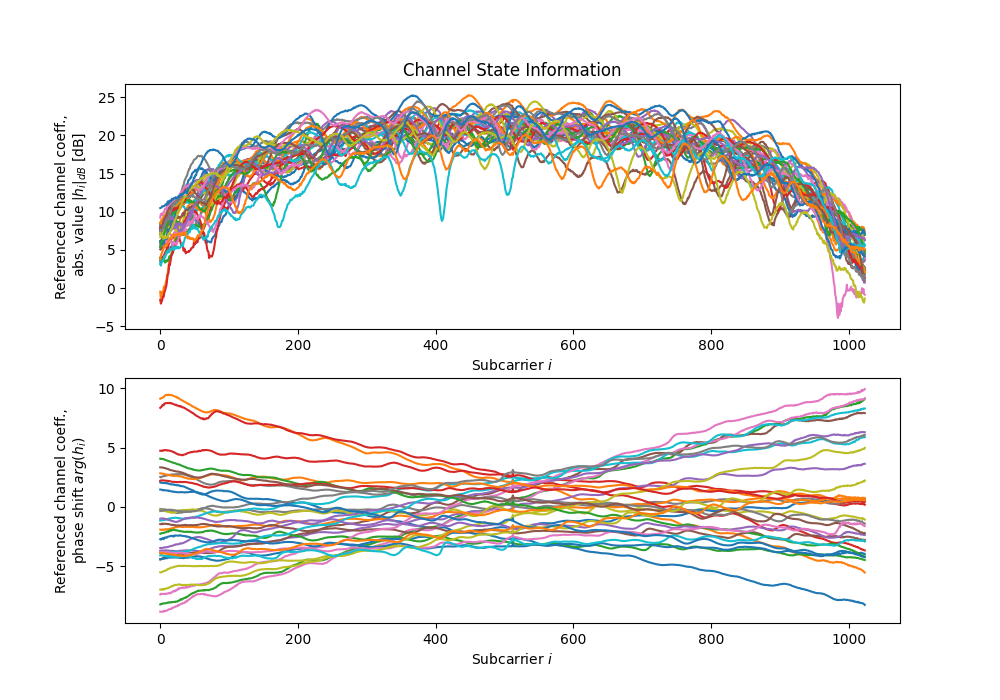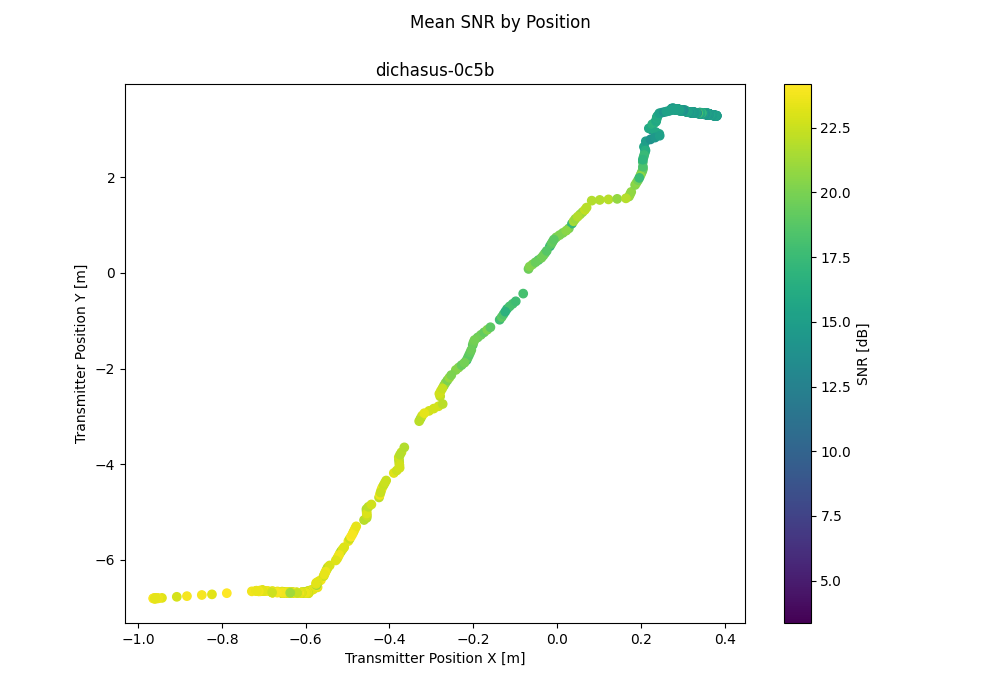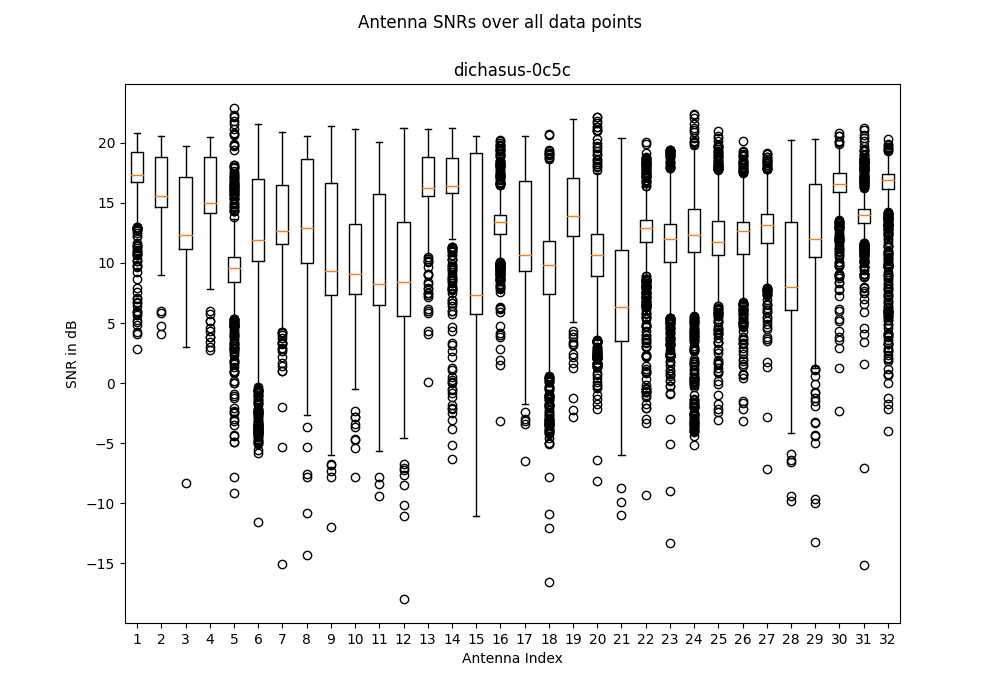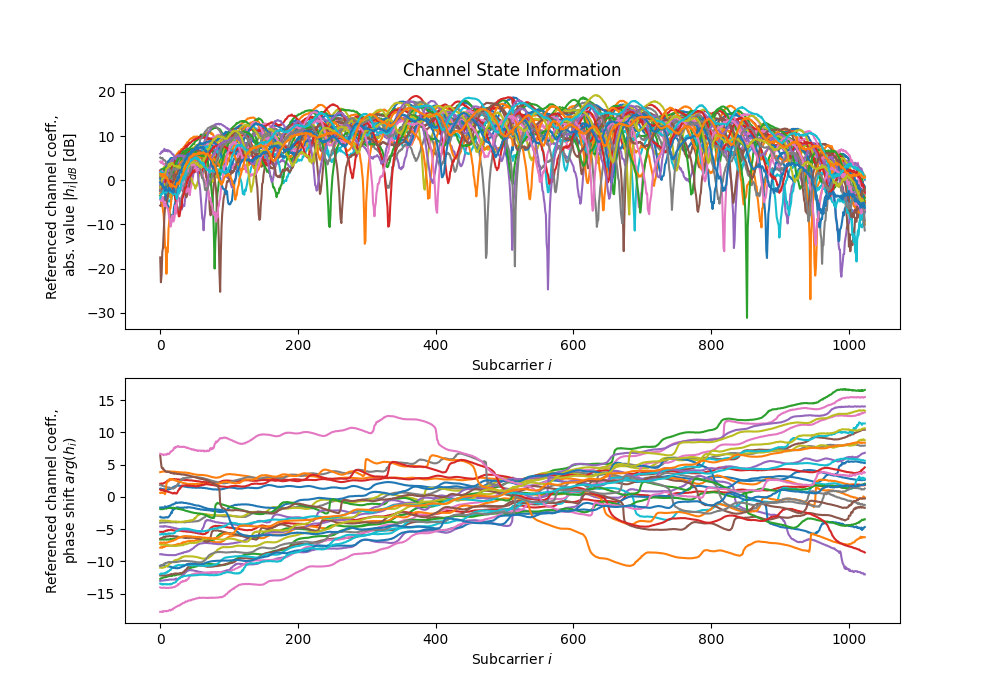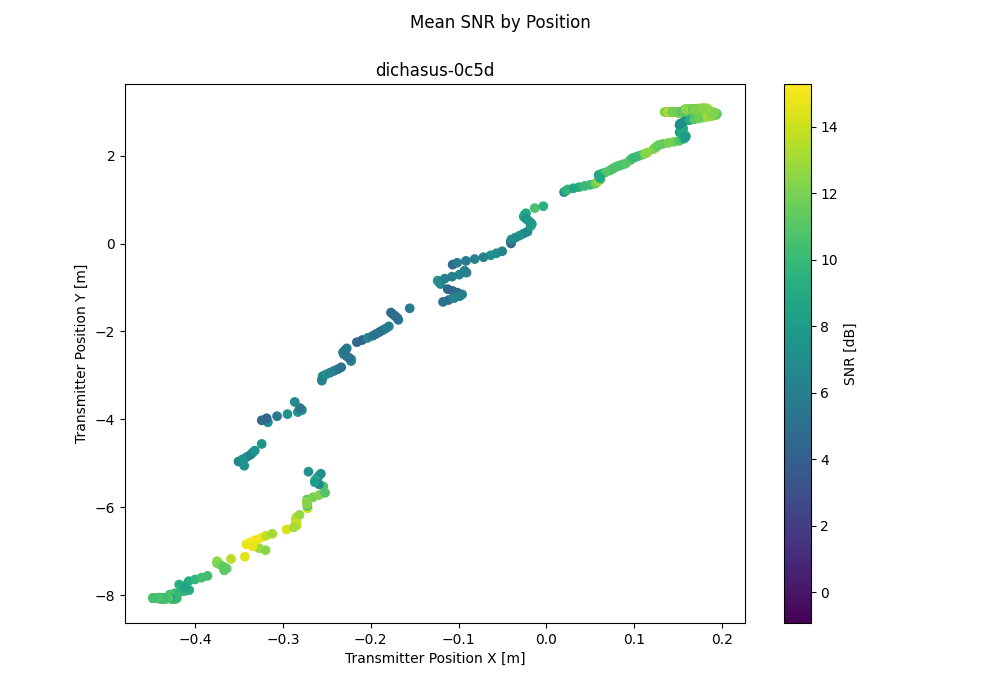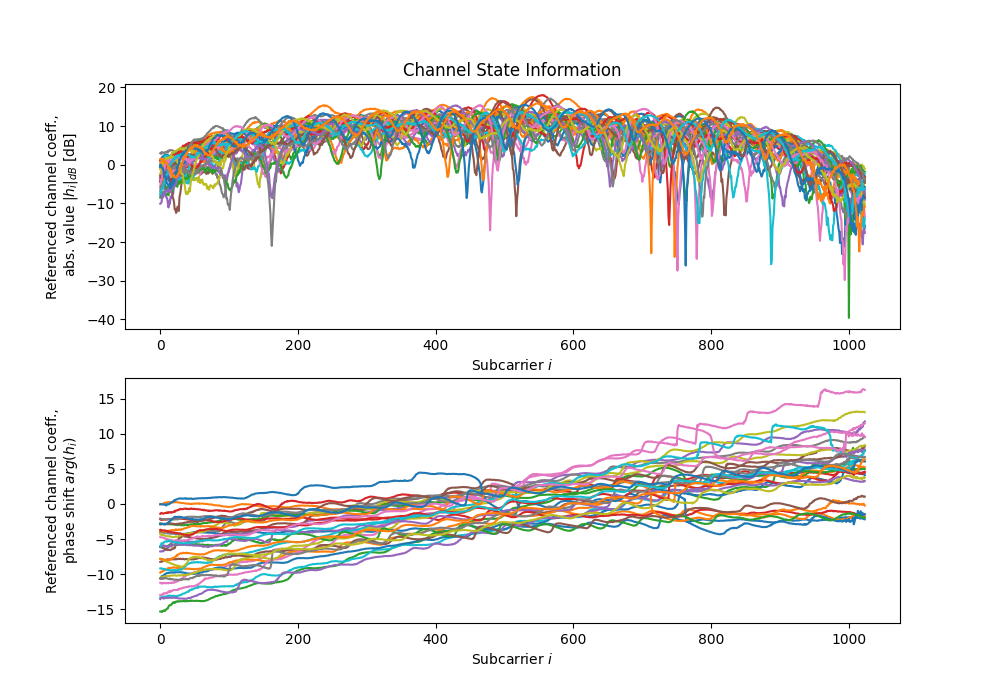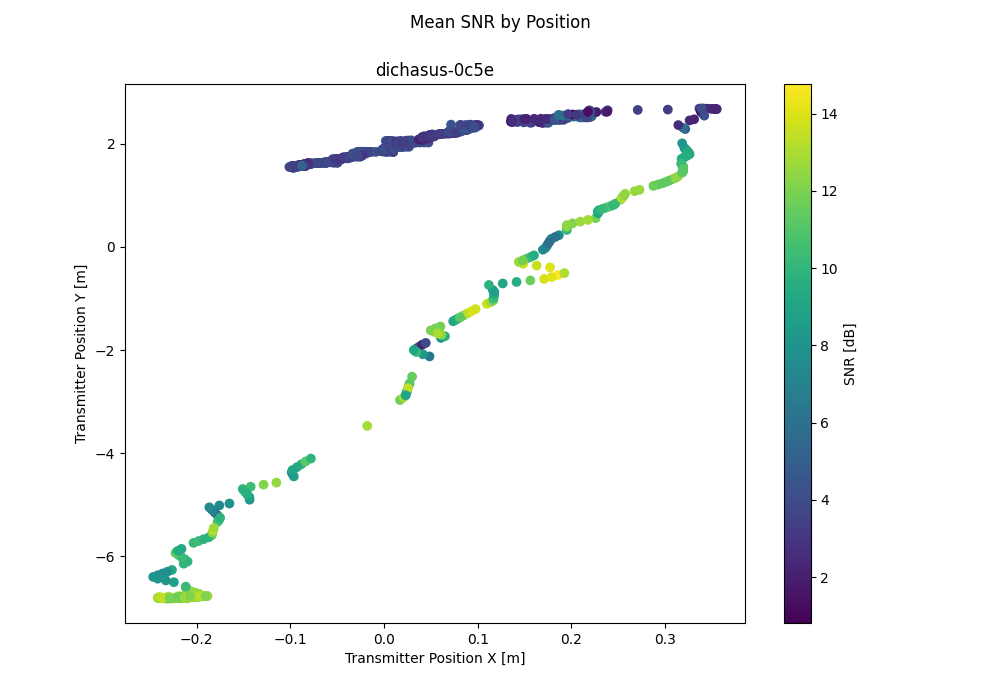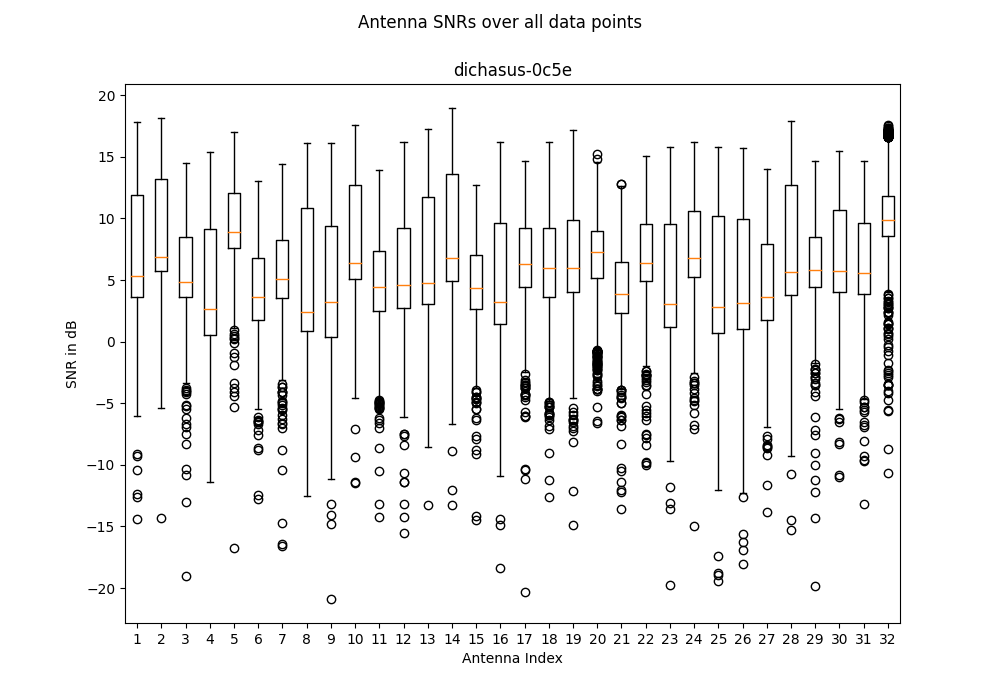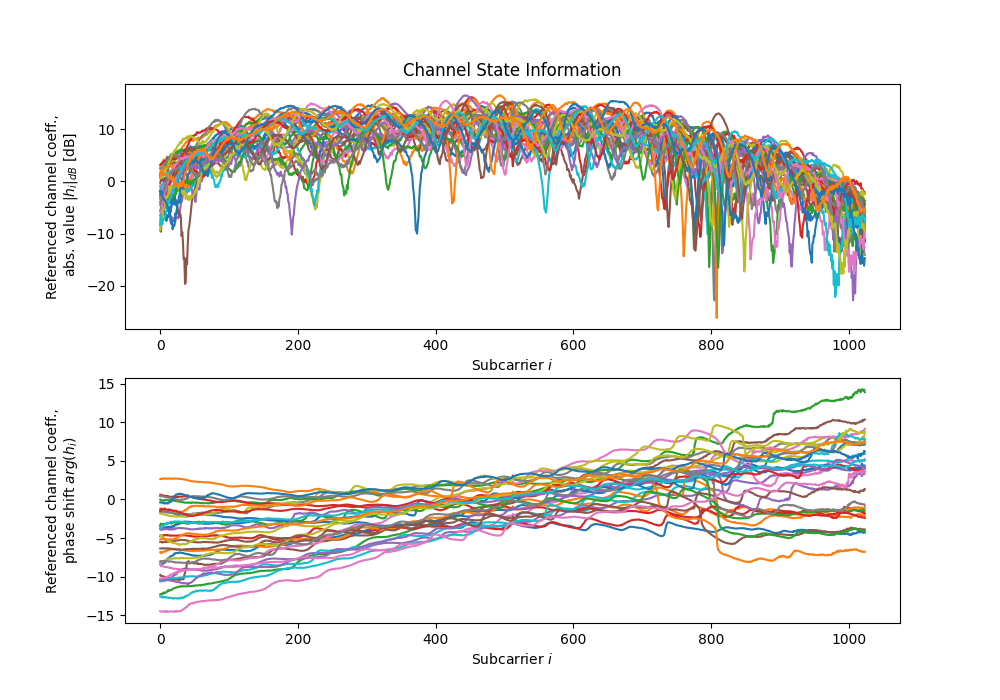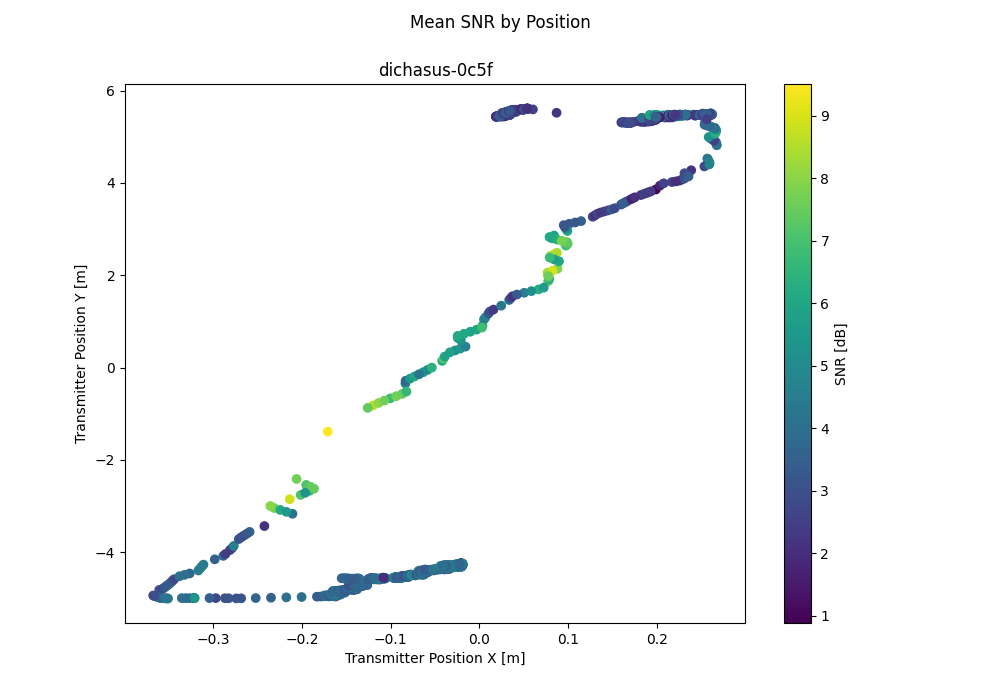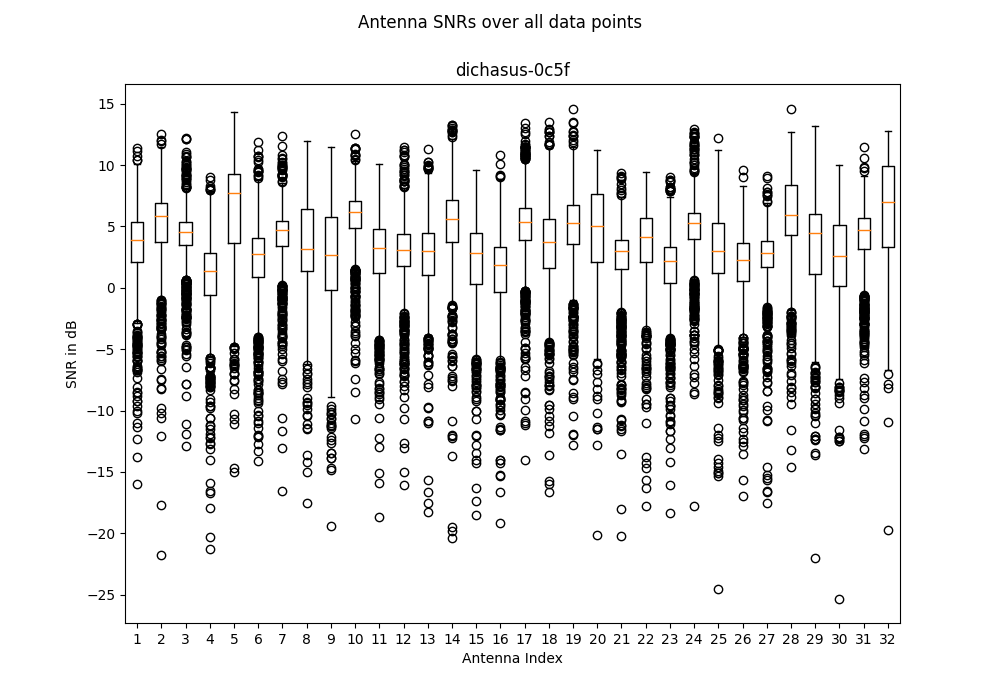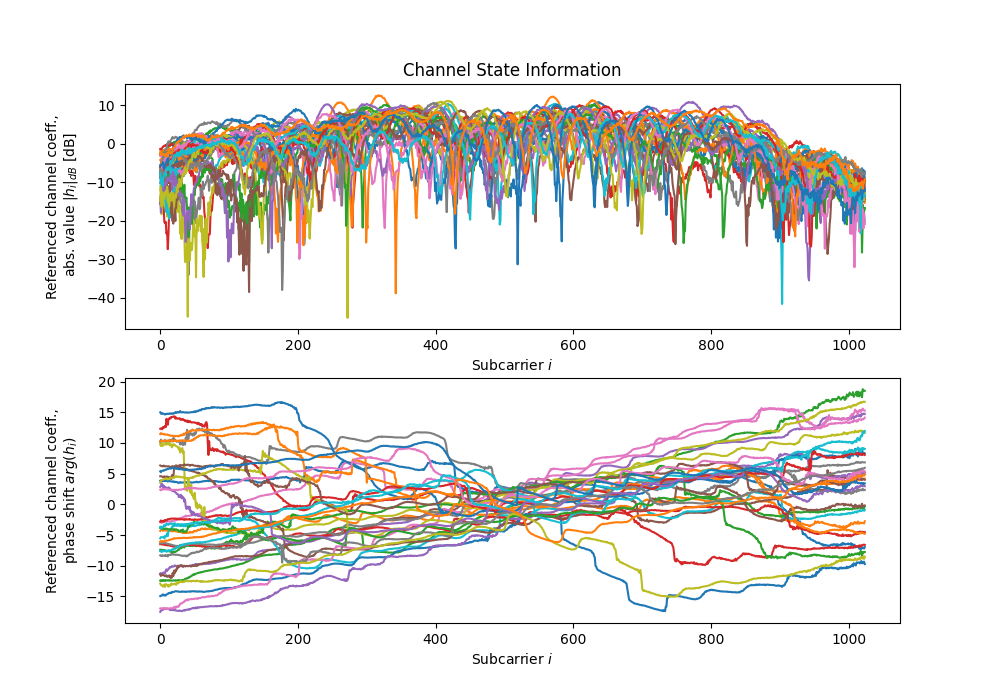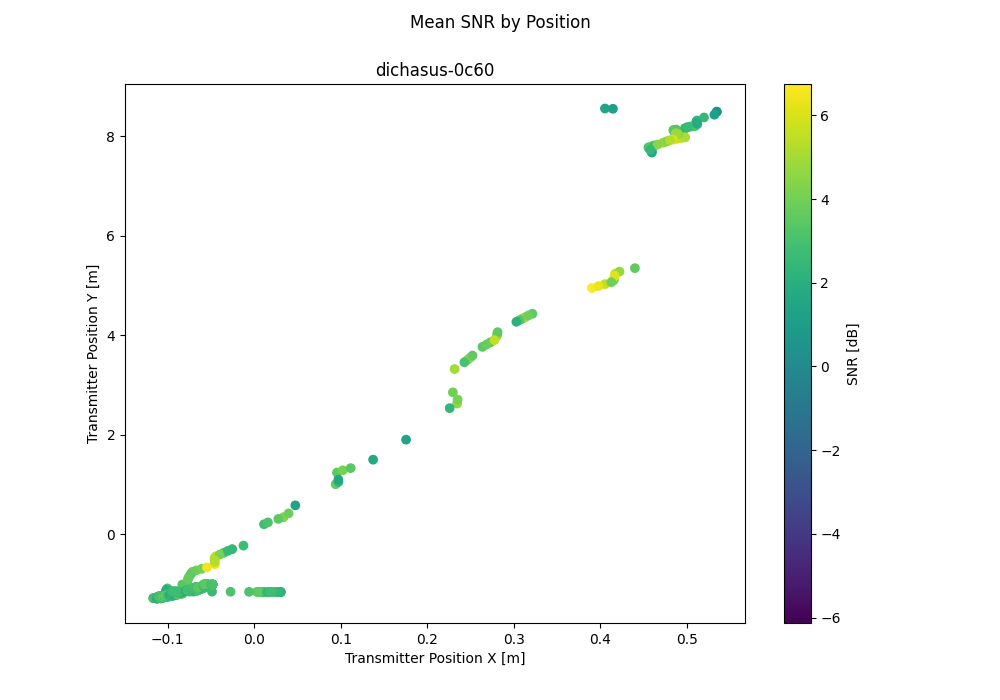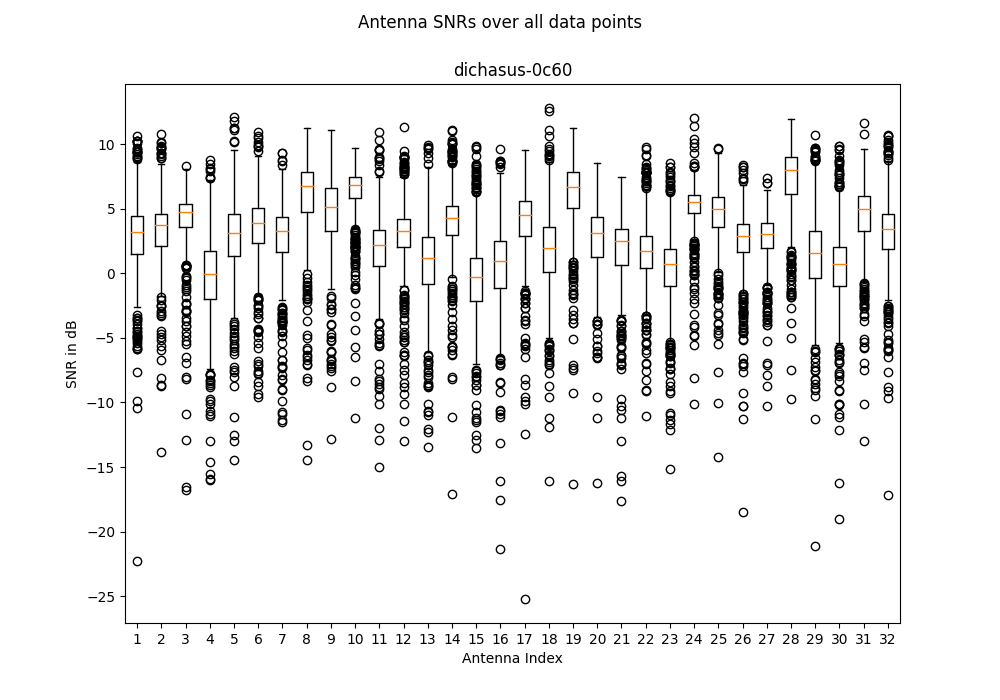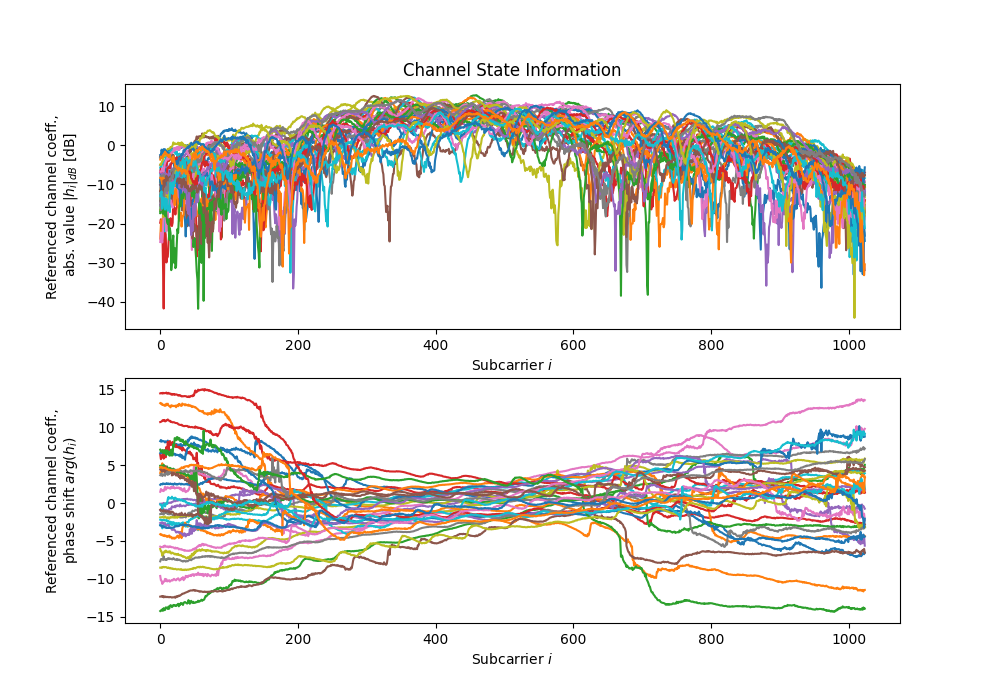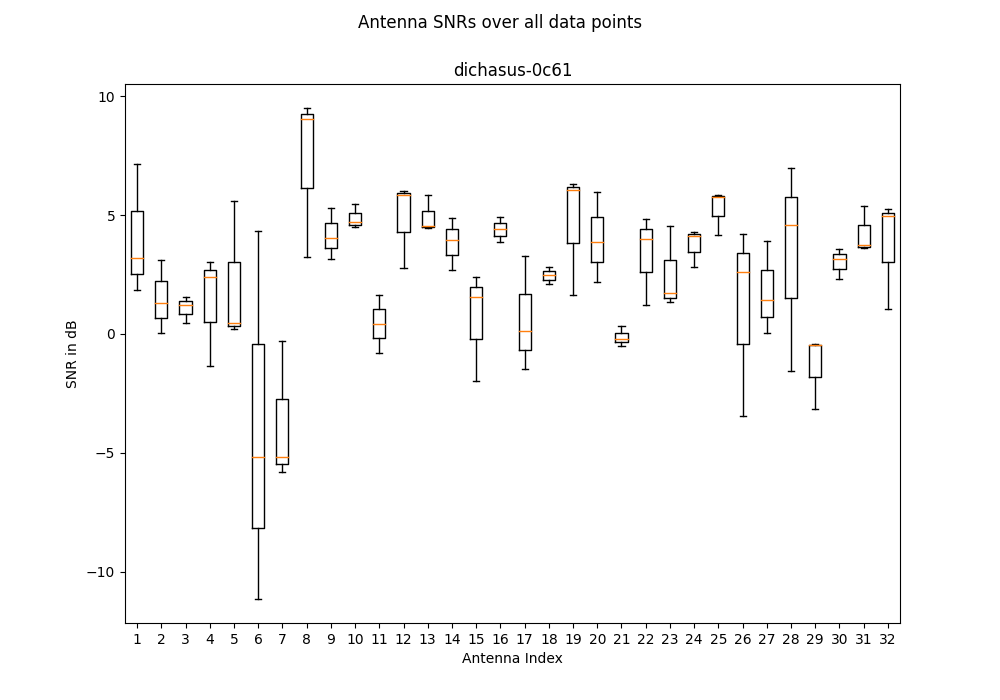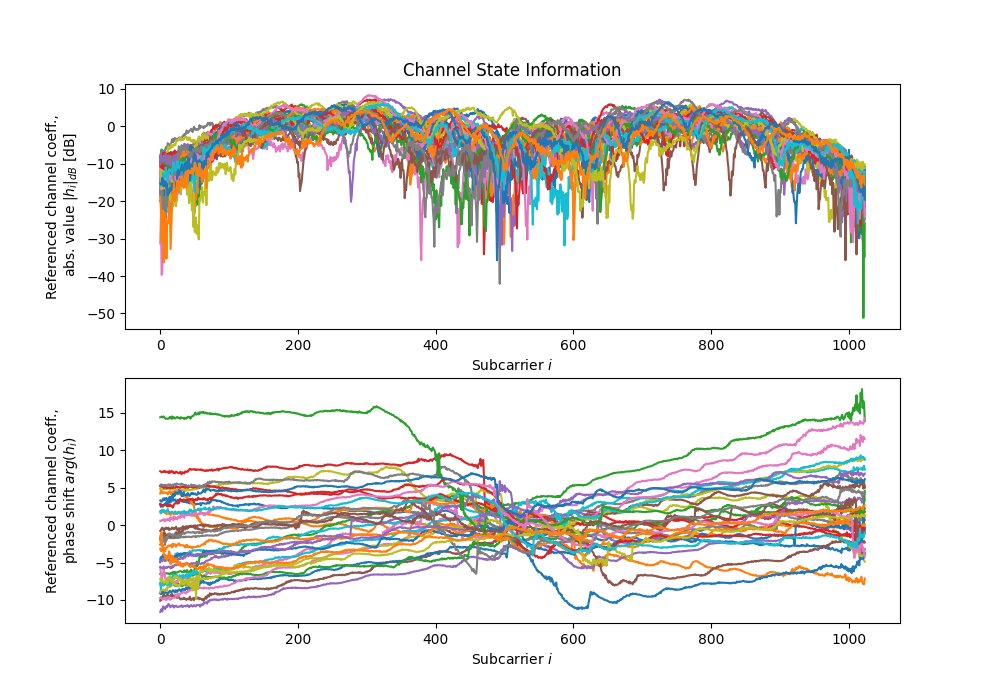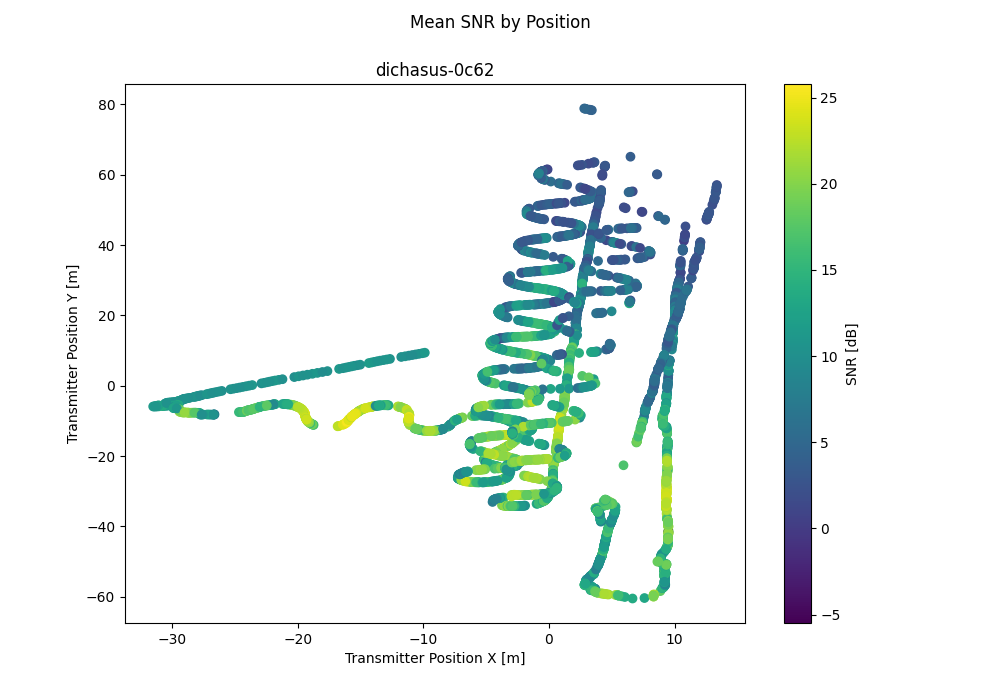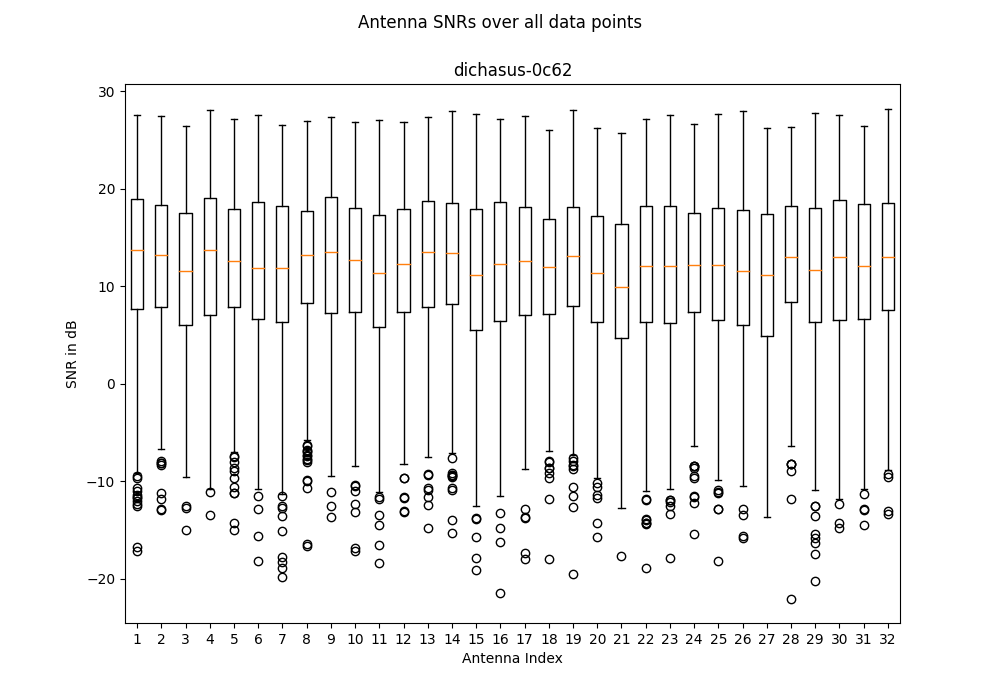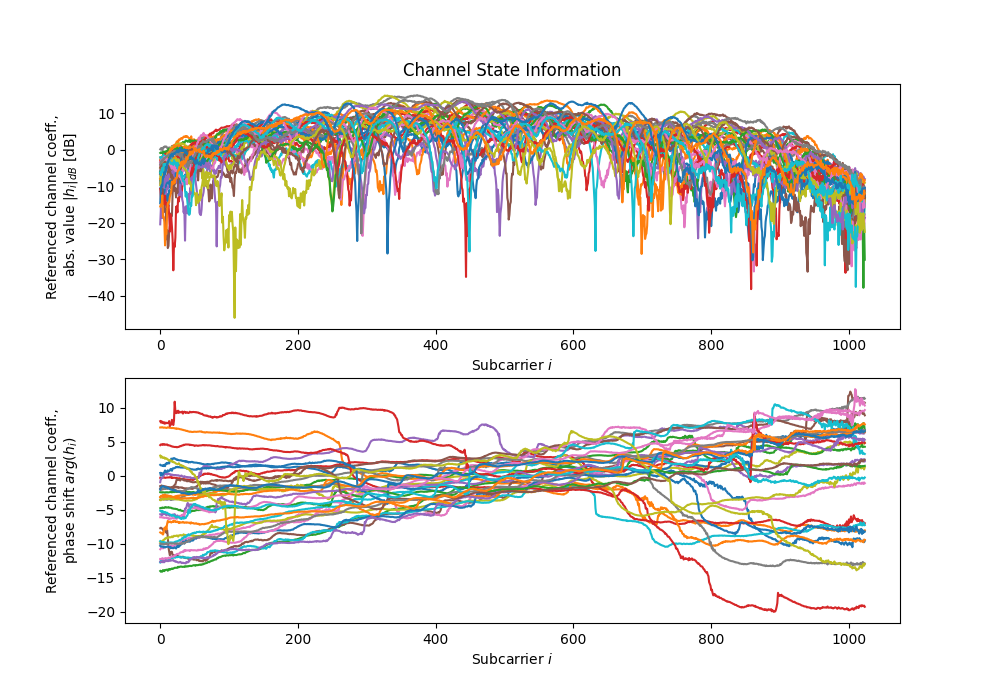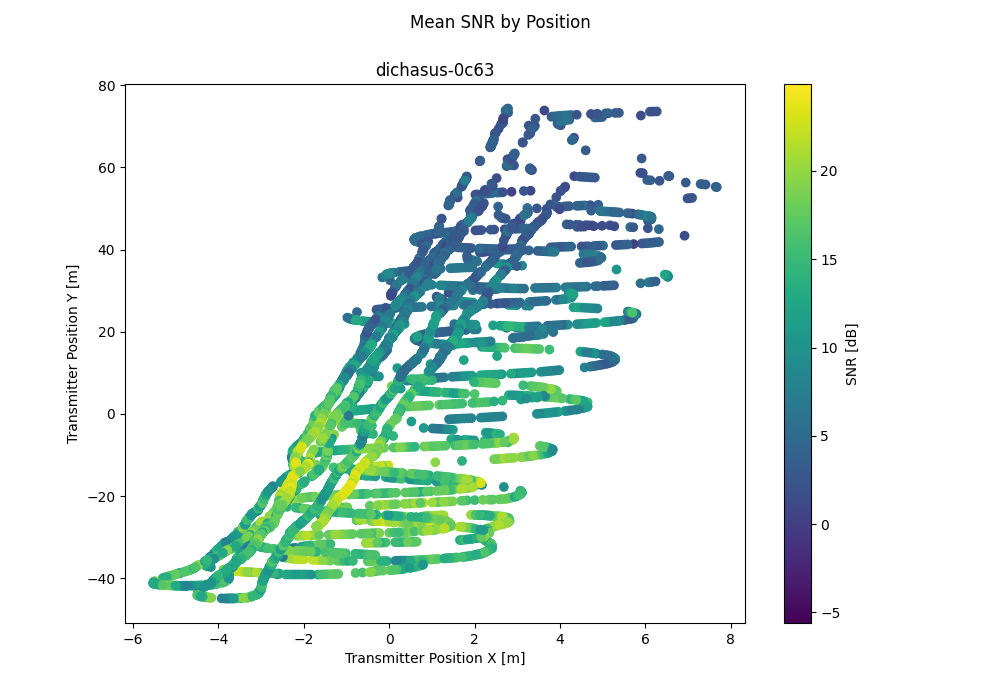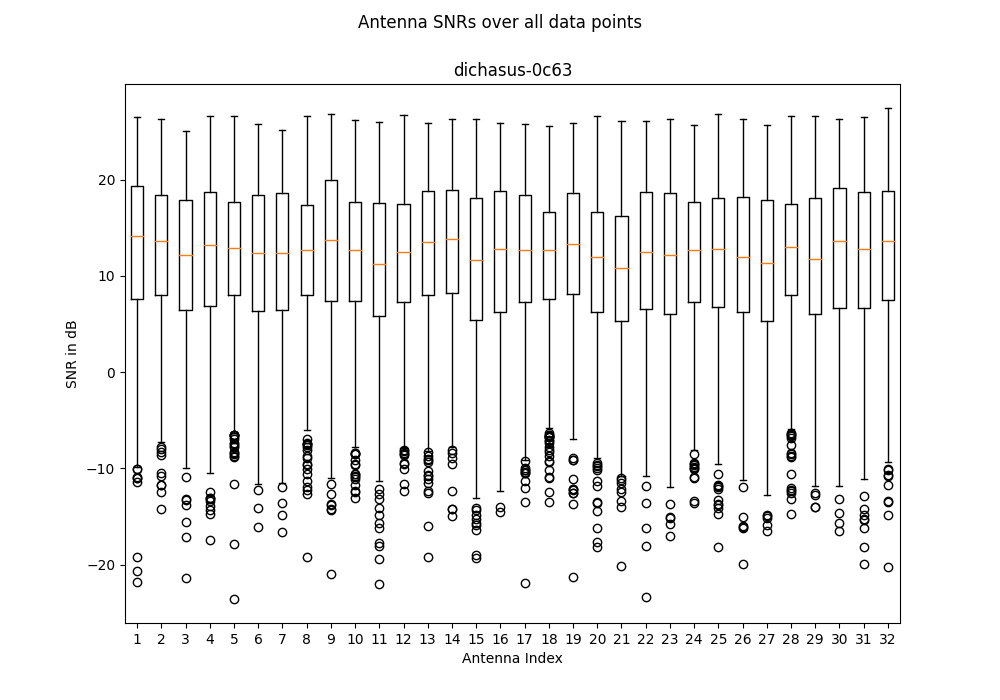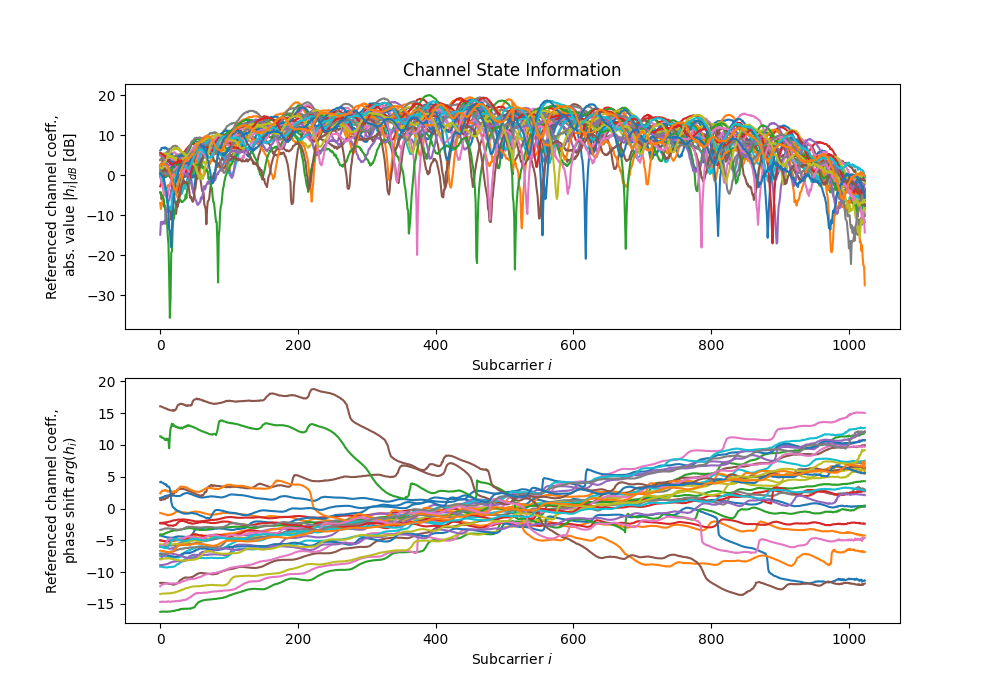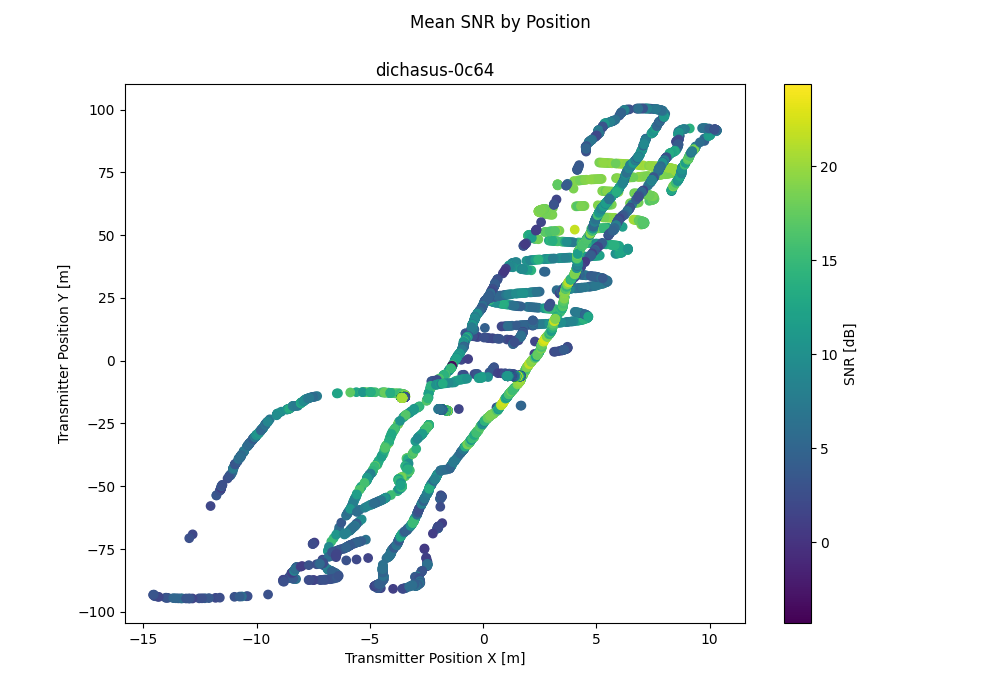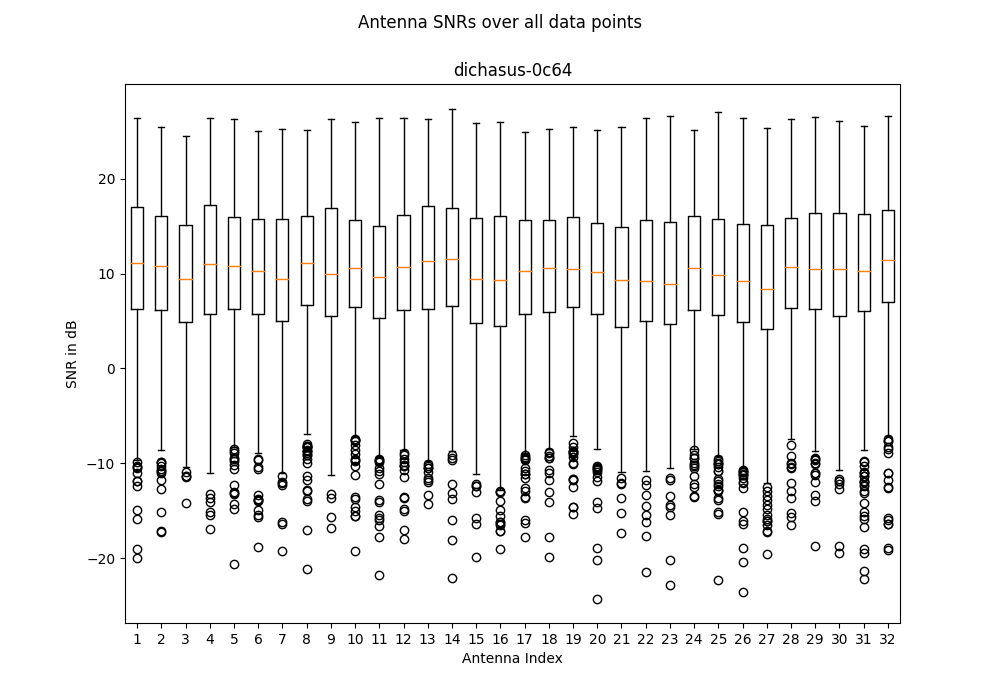dichasus-0c5x Dataset: Outdoor - Street on University Campus
Outdoor, mostly line-of-sight dataset with transmitter on a street between two tall buildings on the university campus
50.000 MHz
Signal Bandwidth
1024
OFDM Subcarriers
27922
Data Points
3389.1 s
Total Duration
7.3 GB
Total Download Size
32
Number of Antennas
Outdoor
Type of Environment
1.272000 GHz
Carrier Frequency
Co-Located
Antenna Setup
3D GNSS
Position-Tagged
3D GNSS
Position-Tagged
Experiment Setup
Data Analysis
Warnings
GNSS Ground Truth Map
Antenna Configuration
Antenna 1: Main Array
| 28 | 5 | 10 | 14 | 6 | 2 | 16 | 18 |
| 19 | 4 | 23 | 17 | 20 | 11 | 9 | 27 |
| 31 | 29 | 0 | 13 | 1 | 12 | 3 | 7 |
| 30 | 26 | 21 | 25 | 22 | 15 | 24 | 8 |
Python: Import with TensorFlow
#!/usr/bin/env python3
import tensorflow as tf
raw_dataset = tf.data.TFRecordDataset(["tfrecords/dichasus-0c53.tfrecords", "tfrecords/dichasus-0c54.tfrecords", "tfrecords/dichasus-0c55.tfrecords", "tfrecords/dichasus-0c56.tfrecords", "tfrecords/dichasus-0c57.tfrecords", "tfrecords/dichasus-0c58.tfrecords", "tfrecords/dichasus-0c59.tfrecords", "tfrecords/dichasus-0c5a.tfrecords", "tfrecords/dichasus-0c5b.tfrecords", "tfrecords/dichasus-0c5c.tfrecords", "tfrecords/dichasus-0c5d.tfrecords", "tfrecords/dichasus-0c5e.tfrecords", "tfrecords/dichasus-0c5f.tfrecords", "tfrecords/dichasus-0c60.tfrecords", "tfrecords/dichasus-0c61.tfrecords", "tfrecords/dichasus-0c62.tfrecords", "tfrecords/dichasus-0c63.tfrecords", "tfrecords/dichasus-0c64.tfrecords"])
feature_description = {
"cfo": tf.io.FixedLenFeature([], tf.string, default_value = ''),
"csi": tf.io.FixedLenFeature([], tf.string, default_value = ''),
"pos-gnss": tf.io.FixedLenFeature([], tf.string, default_value = ''),
"snr": tf.io.FixedLenFeature([], tf.string, default_value = ''),
"stddev-gnss": tf.io.FixedLenFeature([], tf.string, default_value = ''),
"time": tf.io.FixedLenFeature([], tf.float32, default_value = 0),
}
def record_parse_function(proto):
record = tf.io.parse_single_example(proto, feature_description)
# Measured carrier frequency offset between MOBTX and each receive antenna.
cfo = tf.ensure_shape(tf.io.parse_tensor(record["cfo"], out_type = tf.float32), (32))
# Channel coefficients for all antennas, over all subcarriers, real and imaginary parts
csi = tf.ensure_shape(tf.io.parse_tensor(record["csi"], out_type = tf.float32), (32, 1024, 2))
# Position of transmitter determined by GNSS, in latitude / longitude / height above sea level
pos_gnss = tf.ensure_shape(tf.io.parse_tensor(record["pos-gnss"], out_type = tf.float64), (3))
# Signal-to-Noise ratio estimates for all antennas
snr = tf.ensure_shape(tf.io.parse_tensor(record["snr"], out_type = tf.float32), (32))
# Standard deviation of position label estimate, in meters
stddev_gnss = tf.ensure_shape(tf.io.parse_tensor(record["stddev-gnss"], out_type = tf.float32), (3))
# Timestamp since start of measurement campaign, in seconds
time = tf.ensure_shape(record["time"], ())
return cfo, csi, pos_gnss, snr, stddev_gnss, time
dataset = raw_dataset.map(record_parse_function, num_parallel_calls = tf.data.experimental.AUTOTUNE)
# Optional: Cache dataset in RAM for faster training
dataset = dataset.cache()Reference Channel Compensation
For this dataset, we are able to provide estimated antenna-specific carrier phase and sampling time offsets. These offsets occur due to the fact that the reference transmitter channel is not perfectly frequency-flat. To learn more about why these offsets occur and about their compensation, visit our offset calibration tutorial on this topic. Note that the estimates provided here are "best-effort" calculations. The phase and time offsets between antennas in the same array are usually very accurate, but for antennas that are spaced far apart, the results may be less precise. The offset are constant over the complete dataset.How to Cite
Please refer to the home page for information on how to cite any of our datasets in your research. For this dataset in particular, you may use the following BibTeX:
@data{dataset-dichasus-0c5x,
author = {Euchner, Florian and Gauger, Marc},
publisher = {DaRUS},
title = {{CSI Dataset dichasus-0c5x: Outdoor - Street on University Campus}},
doi = {doi:10.18419/darus-2186},
url = {https://doi.org/doi:10.18419/darus-2186},
year = {2021}
}Download
This dataset consists of 18 files. Descriptions of these files as well as download links are provided below.
dichasus-0c53
dichasus-0c54
dichasus-0c55
dichasus-0c56
dichasus-0c57
dichasus-0c58
dichasus-0c59
dichasus-0c5a
dichasus-0c5b
dichasus-0c5c
dichasus-0c5d
dichasus-0c5e
dichasus-0c5f
dichasus-0c60
dichasus-0c61
dichasus-0c62
dichasus-0c63
Derived Channel Statistics
Channel statistics such as delay spread, k-Factor and path loss exponent are a good way to characterize a wireless channel measurement and to parametrize a channel model. Using estimation algorithms contributed by Janina Sanzi, we automatically extract the following channel statistics from the measured datasets:

